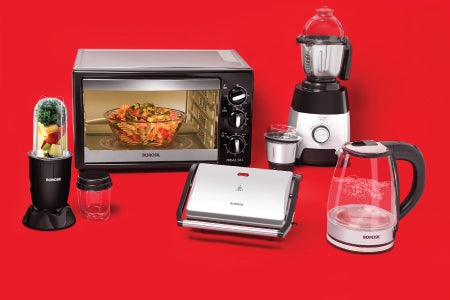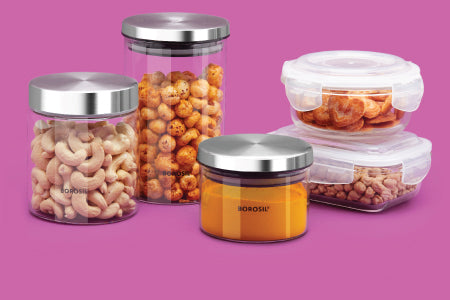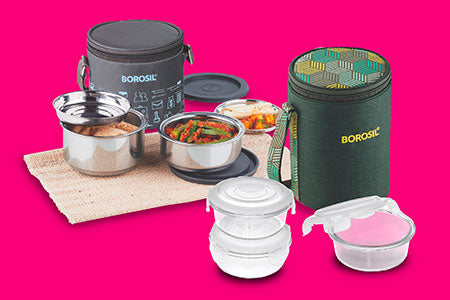
Mumbai Style Pav Bhaji Recipe
Make Buttery Mumbai-style Pav Bhaji to Enjoy as a Snack
An iconic dish of Mumbai, pav bhaji is a popular street food loved all over India. Pav bhaji’s popularity has made it a quick lunch and snack option in restaurants and street food centres. But before you delve into the drool-worthy recipe of pav bhaji, you can start with understanding what the words “pav bhaji” mean. In Marathi, pav means bread rolls, and bhaji is a gravy or dry-style mixed vegetable dish.
Pav bhaji is a simple dish, but its importance comes from your ingredients. One of the most important pav bhaji ingredients is the pav bhaji masala, which you must have prepared before making the bhaji.
Learn How to Make Pav Bhaji in a Few Steps
Ingredients for Making Lip-Smacking Pav Bhaji
Before you begin with the first step of the pav bhaji recipe, you must collect all the ingredients you will need. These ingredients include the following:
- Mixed vegetables (carrots, cauliflower, green peas, potatoes, and more)
- Pav bhaji masala
- Butter
- 1 teaspoon cumin seeds
- Pav
- ½ cup chopped onions
- 2 teaspoons ginger-garlic paste
- 1-2 chopped green chillies
- 1 teaspoon Kashmiri red chilli powder
- 1 teaspoon turmeric powder
Step 1: Cook the Vegetables
The first place to start in your pav bhaji recipe is by rinsing, peeling and chopping the vegetables. You can use vegetables such as potatoes, french beans, carrots, and cauliflowers. You can always add various vegetables, but be careful not to add veggies like eggplants, yam, okra, radish, or anything else.
Hence, you can start making the vegetables by following the below-given steps:
- Add ⅓ cup of chopped French beans, 3 medium-sized chopped potatoes, 1 cup of chopped carrots, 1 cup of green peas, and 1 cup of chopped cauliflower into a pressure cooker.
- Add around 2.5 or 2.25 cups of water to the pressure cooker.
- Cook the vegetables for around 12 minutes or 5-6 whistles on medium heat.
- Once the pressure has settled, you can check whether the vegetables are softened, fork-tender, and cooked well.
Now, set them aside with the stock or broth.
Pro Tip: If you don’t want to cook your vegetables in a pressure cooker, steam or boil them using an instant pot or a pan.
Step 2: Saute Other Vegetables
After boiling some of your vegetables, your second step is sauteing capsicum, tomatoes, and onions. Follow the below-given instructions to saute your vegetables according to your liking.
- Heat a kadhai or a frying pan and add 2-3 tablespoons of butter.
- Melt the butter and add around 1 teaspoon of cumin seeds. Let the seeds crackle and change colour.
- Add ½ cup of chopped onions and mix it in the butter while sauteing on medium to low heat. Saute the onions till they become translucent.
- Add around 2 teaspoons of garlic-ginger paste and saute them for some seconds so their aroma vanishes.
- Add 1-2 chopped green chillies and 2 cups of finely diced tomato. Mix the ingredients well and let the tomatoes cook on medium to low heat.
- When the tomatoes have fully cooked, you can go ahead and add ½ cup of finely chopped capsicum or green bell peppers and saute them for around 2-3 minutes.
- Add 1 teaspoon of Kashmiri red chilli powder and 1 teaspoon of turmeric powder.
Step 3: Make the Bhaji
After sauteing your vegetables, start with the steps given below:
- Add 2-3 tablespoons of pav bhaji masala powder to your sauteed vegetables. You can add the masala in varying proportions depending on how intense the flavour and aroma of the masala you want it to be.
- Mix the masala well, and then add the cooked vegetables.
- Mix thoroughly, and add the vegetable stock left from before.
- Mix your contents again, and then add salt according to your taste.
- Mash your vegetables directly in the pan with a potato masher and create the desired consistency.
Now you can continue mixing occasionally, let the gravy simmer for around 8-10 minutes on a low flame. If your bhaji looks dry, add more water, but the consistency should not be too thin or thick.
Pro Tip: Stir the bhaji continuously, it should not stick to the pan. Also, check the taste while the bhaji simmers, and you can add butter, red chilli powder, salt, or the pav bhaji masala again if needed.
Step 4: Pan Fry the Pav
You can pan-fry your bread rolls while your bhaji is still simmering. This way, you can serve your pav when the bhaji is ready. However, before you start frying the bread rolls, cut the bread roll from the middle to get two halves.
Now, follow the steps given below for frying the pav:
- Heat a skillet or a tawa, and put 1-2 tablespoons of butter in it. Keep the heat low when adding the butter, and then add 1 teaspoon of pav bhaji masala. However, the masala is purely optional, so you can skip it if you want.
- Mix the masala with the butter using a spatula or a spoon. And then you can go ahead and put the pav on the butter.
- Turn over the bread rolls and press them gently while rotating on the tava to ensure both sides absorb the mixture. You can be generous with the butter if you want, and once the bread is toasted, you can set it aside on a plate.
Pro Tip: Serve piping hot pav bhaji with a bit of butter, a slice of lemon wedges, and some finely chopped onions and cilantro or coriander leaves.
Conclusion
Pav bhaji is one of the easiest yet delicious Indian dishes that can put an instant smile on everyone’s face with its tantalising aroma that hints at the lip-smacking goodness that will melt on the tastebuds. But the first thing you must do is learn how to make pav bhaji. And from there, you can start experimenting with different pav bhaji recipes that may delight you.
Frequently Asked Questions (FAQs)
- What other appliance can I use to make pav bhaji apart from a pressure cooker?
If you don’t want a pressure cooker, you can always use a steamer pan or an instant pot. The pav bhaji recipe for these two cookware is almost the same, apart from a few changes here and there.
- How do I get red or orange colour in my pav bhaji?
If you want an orange or red colour, you can make a red chilli paste and add it gradually to your bhaji. However, when the bhaji is cooked in a restaurant, artificial colours may be used to get the orange or red hue in the bhaji. Or, you can add some Beetroot to get that beautiful reddish-pink colour in your bhaji.
- What masala can I use instead of pav bhaji masala?
If you don’t have pav bhaji masala, use 1 teaspoon of dried mango powder or amchur and 2 tablespoons of garam masala powder.





















